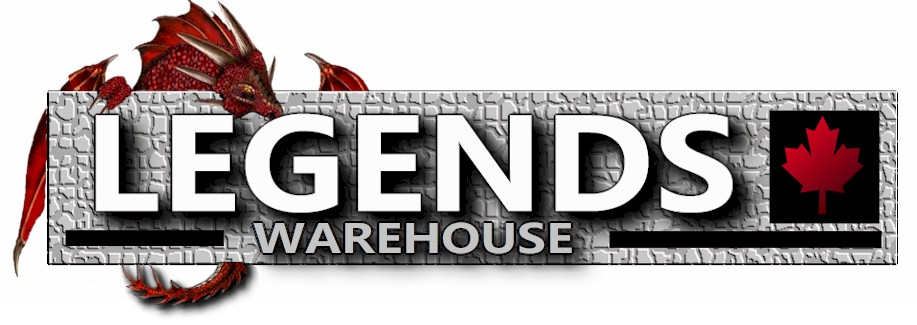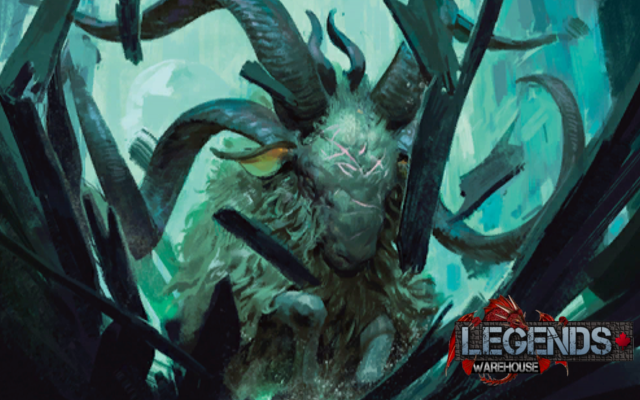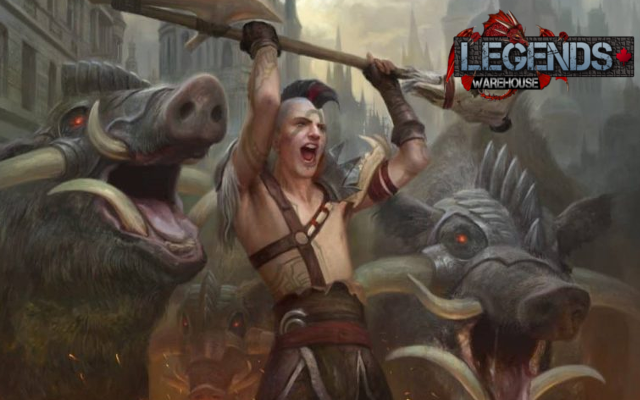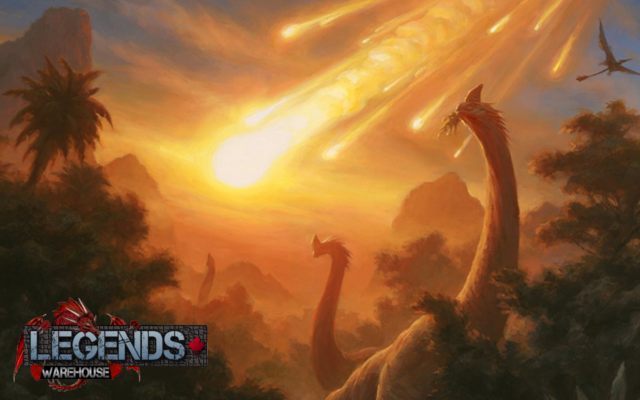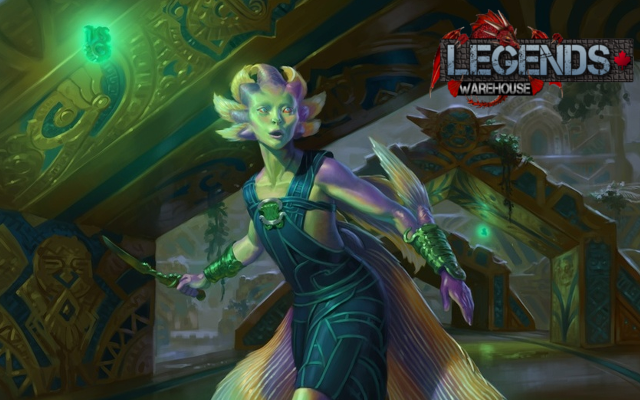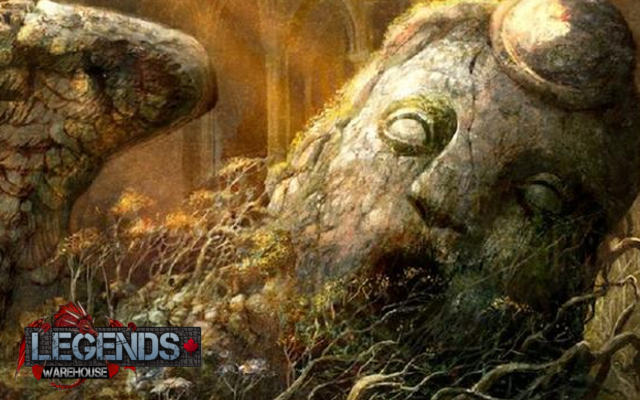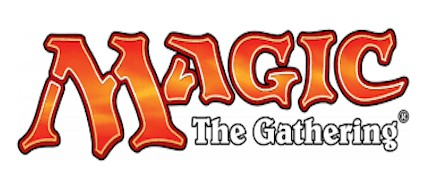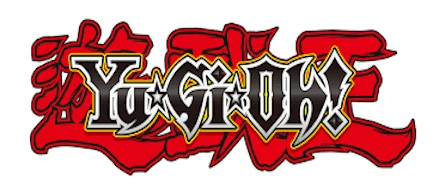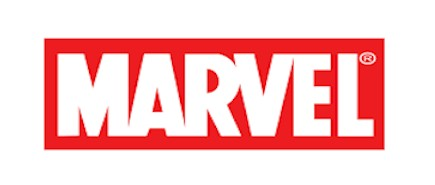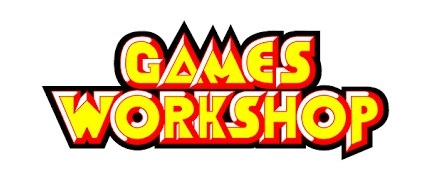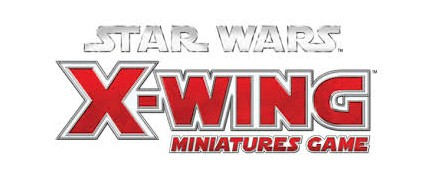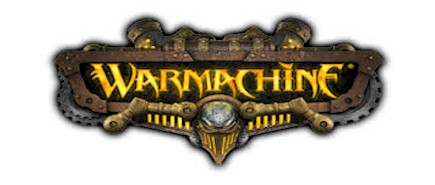Cloudposting Results
- Legends Warehouse News
- 04 Aug, 2017
With Sensei’s Divining Top dead and gone and the world returning to normal, the Legacy metagame has shifted. Gone are the days of living in fear of the phrase “Counterbalance trigger, spin Top”, and 1-drops can be cast with impunity. Or can they? In Miracles absence we find a vacuum of power, a void yearning to be filled by another deck looking to jam spells that go over the top of even the mighty Gurmag Angler, one of the largest threats out there that doesn’t require Show and Tell or Reanimate. But what if I told you that such a deck not only exists, but it's an offshoot of one of the most dominant aggro decks in the past two years?
Eldrazi has been an increasingly popular deck in Legacy due to its ability to combine giant, cheap bodies with tribal synergies backed up by Cavern of Souls. Each Eldrazi brings something unique to the table, the least of which is a sizeable clock. One of the other reasons Eldrazi has been so powerful is its ability to abuse Chalice of the Void, a card that has proven to be the bane of Blue decks for nearly a decade. While traditionally an aggro deck, a metagame shift toward grindier decks like Grixis Delver has led to a change in philosophy for Eldrazi players. What if we shied away from the aggressive Eldrazi Mimic builds and went for a bigger approach to go over the top? With that simple question, Eldrazi Post was born.
ELDRAZI POST
- 4 Thought-Knot Seer

- 4 Reality Smasher
- 4 Matter Reshaper
- 3 Endbringer
- 4 Endless One
- 2 Ulamog, the Ceaseless Hunger
- 4 Oblivion Sower
- 4 Chalice of the Void
- 2 All is Dust
- 3 Grim Monolith
- 4 Cloudpost
- 4 Glimmerpost
- 2 Vesuva
- 4 Eldrazi Temple
- 4 Ancient Tomb
- 4 Cavern of Souls
- 3 Eye of Ugin
- 1 Urborg, Tomb of Yawgmoth
- 4 Thorn of Amethyst
- 4 Leyline of the Void
- 3 Pithing Needle
- 1 All is Dust
- 1 Emrakul, the Aeons Torn
- 2 Ratchet Bomb
What makes this so powerful compared to the aggro builds of Eldrazi is that by cutting smaller impact cards like Eldrazi Mimic and Warping Wail we make room for higher impact threats like Ulamog, the Ceaseless Hunger and Oblivion Sower, both of which dwarf the Delve creatures in Grixis while providing us value with nigh-uncounterable cast triggers. As well, the inclusion of All is Dust can sweep away muddy board states that used to give Eldrazi Aggro headaches. Endbringer acts as a jack of all trades, providing us card advantage, removal, combat control, and most importantly a clock, all as early as turn 3.
threats like Ulamog, the Ceaseless Hunger and Oblivion Sower, both of which dwarf the Delve creatures in Grixis while providing us value with nigh-uncounterable cast triggers. As well, the inclusion of All is Dust can sweep away muddy board states that used to give Eldrazi Aggro headaches. Endbringer acts as a jack of all trades, providing us card advantage, removal, combat control, and most importantly a clock, all as early as turn 3.
As well, the deck keeps some of its staples from the aggro version, such as Thought-Knot Seer, Reality Smasher, Matter Reshaper, and Endless One. Thought-Knot Seer is arguably the best Eldrazi creature printed since Emrakul, the Aeons Torn, providing us a sizeable body and hand disruption by the second turn. Reality Smasher does the majority of the heavy lifting when it’s time to close out games due to the tried and true combination of haste and trample, as well as its built-in protection against removal.
Matter Reshaper and Endless One play slightly smaller roles in this version, but they are important nonetheless. When the deck had Eldrazi Mimic, these two were crucial for growing Mimics to get in for early damage. However, here Matter Reshaper acts as a roadblock for smaller ground creatures. With a whopping 26 lands and three Grim Monoliths, it’s not difficult for Matter Reshaper to flip a permanent onto the battlefield when it dies, effectively turning it into a ramp spell. Endless One was notable in the aggro builds for coming down as a 2/2 for free with Eye of Ugin. While it can still do that, here Endless One is more likely to be played for 7+ mana and overwhelm the opponent’s defenses early on. The deck generates a massive amount of mana, and having a way to sink that mana into something gigantic is important for outmuscling fairer decks.
What is notable about this build is the manabase. While the majority of Eldrazi decks run City of Traitors and Wasteland to ramp and shut off the opponent’s mana, this version instead opts for the Cloudpost package. This provides far more mana than City of Traitors over the course of a longer game, it also decreases the number of awkward situations with your mana that come from drawing too many City of Traitors, which forces you to sequence your plays in a way that can often set yourself behind. While losing Wasteland does hurt, this deck wants to hit its land drops every turn, and losing even one turn to using Wasteland can delay your end game enough that it isn’t worth it.
The only major issue is that having only Ancient Tomb for a non-Eldrazi Sol land makes it harder to play Chalice of the Void on turn 1, but for the most part your ideal turn 1 play is Cloudpost, and due to the format slowing down, it’s not as important to jam Chalice out as fast as you can. The main matchups you want to be doing that are Storm and Reanimator, but even then a Chalice on 0 shuts off Storm’s Lotus Petals and Lion’s Eye Diamonds, which are the real threats for them comboing off, and against Reanimator you can often stick an Endbringer to lock down the threat they bring back long enough to get Ulamog online.
The sideboard is geared more toward fighting faster combo decks since we can easily  overpower fair decks. Full sets of Thorn of Amethyst and Leyline of the Void and a trio of Pithing Needle maximize the chance of drawing them in our opening hand when we need them most. Thorn of Amethyst can shut down the majority of Storm decks by taxing their spells to the point where they net virtually no mana off of their rituals. This also does a great job of slowing down decks like Sneak & Show by making it harder to dig for their combo. Leyline of the Void comes in for Dredge and Reanimator since it’s an uncounterable way of shutting off their graveyard and with it their entire gameplan. Pithing Needle is mostly there for Lands and Turbo Depths since it can stop both Wasteland and Thespian’s Stage, thus preventing them from disrupting our mana production and comboing off with Dark Depths.
overpower fair decks. Full sets of Thorn of Amethyst and Leyline of the Void and a trio of Pithing Needle maximize the chance of drawing them in our opening hand when we need them most. Thorn of Amethyst can shut down the majority of Storm decks by taxing their spells to the point where they net virtually no mana off of their rituals. This also does a great job of slowing down decks like Sneak & Show by making it harder to dig for their combo. Leyline of the Void comes in for Dredge and Reanimator since it’s an uncounterable way of shutting off their graveyard and with it their entire gameplan. Pithing Needle is mostly there for Lands and Turbo Depths since it can stop both Wasteland and Thespian’s Stage, thus preventing them from disrupting our mana production and comboing off with Dark Depths.
While our matchups with fair decks are typically pretty good, it’s important to have a little insurance. A third copy of All is Dust gives us an edge against decks that try to go wide like Elves, as well as providing a way to clear away roadblocks like True-Name Nemesis and Jace, the Mind Sculptor. Ratchet Bomb is another necessary tool for dealing with Elves as well as Topless Miracles since they tend to rely on creatures that all have the same mana cost, making it easy to sweep them all away with Ratchet Bomb. Finally, for long, drawn-out games we have a single copy of Emrakul, the Aeons Torn. Getting to 15 mana is surprisingly easy in certain matchups, and Emrakul provides a virtual “I win” button that you can tutor up with Eye of Ugin. Annihilator 6 is no laughing matter, and with all the ways we can chip away at our opponent’s life total, 15 damage may as well be the game on its own. As well, while not as important, bringing in Emrakul against Show and Tell decks gives you an out against the “Show and Tell into creature” line since you’ll get to attack with your creature first.
Alternative options for the sideboard include Coercive Portal, Trinisphere, Dismember, and Wurmcoil Engine. Coercive Portal is fantastic against slower control decks since you can just sit there and draw extra cards over and over until you need to blow up the board. One of the biggest ways this deck can falter is by running out of gas, and Coercive Portal can keep your hand filled with action. Trinisphere is another card for hurting combo decks since the majority of them will rarely have the three mana required to cast even one spell let alone a combination of them. This card is a bit trickier to get early than Thorn of Amethyst since it costs an extra mana, but it’s considerably harder to fight through. Dismember is traditionally for decks that rely on a single creature that you need to interact with, such as Infect or Painter Stone. These decks have all but fallen off the radar, but having a way of killing off opposing 5/5s can do wonders against Gurmag Angler and the mirror. Finally, Wurmcoil Engine is basically game over against aggressive ground decks like Sultai Leovold and most Delver decks. It’s virtually impossible to race and provides two creatures even if they manage to destroy it, so it’s never a bad option to have handy if there aren’t a lot of Swords to Plowshares in the room.
Wurmcoil Engine. Coercive Portal is fantastic against slower control decks since you can just sit there and draw extra cards over and over until you need to blow up the board. One of the biggest ways this deck can falter is by running out of gas, and Coercive Portal can keep your hand filled with action. Trinisphere is another card for hurting combo decks since the majority of them will rarely have the three mana required to cast even one spell let alone a combination of them. This card is a bit trickier to get early than Thorn of Amethyst since it costs an extra mana, but it’s considerably harder to fight through. Dismember is traditionally for decks that rely on a single creature that you need to interact with, such as Infect or Painter Stone. These decks have all but fallen off the radar, but having a way of killing off opposing 5/5s can do wonders against Gurmag Angler and the mirror. Finally, Wurmcoil Engine is basically game over against aggressive ground decks like Sultai Leovold and most Delver decks. It’s virtually impossible to race and provides two creatures even if they manage to destroy it, so it’s never a bad option to have handy if there aren’t a lot of Swords to Plowshares in the room.
The Legacy metagame is still fresh after the banning of Sensei’s Divining Top. Players have been tuning existing archetypes to deal with its absence and the ensuing shift toward aggro, but in that chaos Eldrazi has evolved to an even larger form. Being able to go over the heads of the most popular threats in the format is all it takes to carve a niche in Legacy, so it stands to reason that this shift for Eldrazi is a step in the right direction. If you’re in the mood for ramping to 6+ mana by turn 3 and squashing Delver under a mass of tentacles, then Eldrazi Post is the deck for you!
